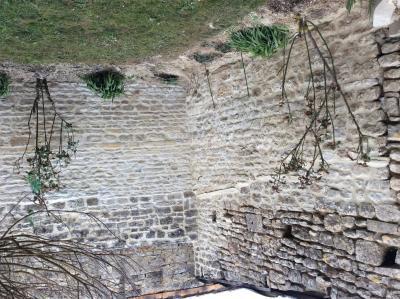Many older French properties will contain at least some stone walls, often they have been rendered or plastered over or have been covered in timber cladding. It is well worth exposing some of them as they add a lot of character and warmth.
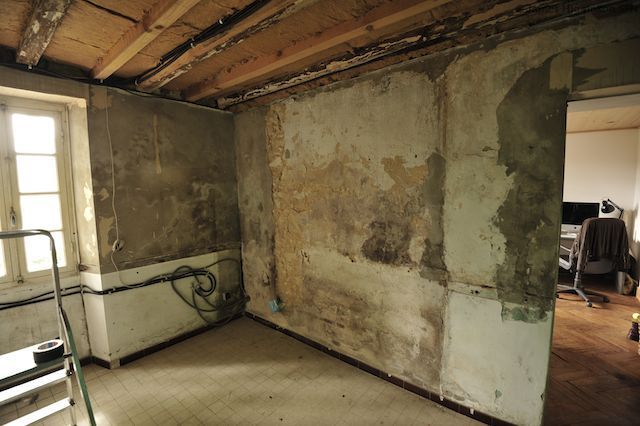
Chipping of the old render in this case was easy, it was very loose and came of with hand tools mainly.
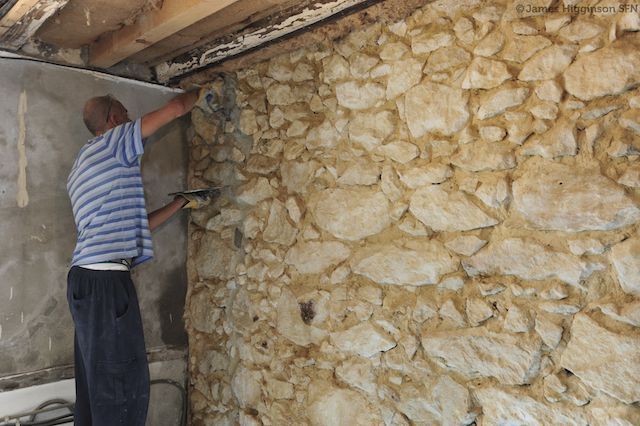
Repair any big cracks with mortar before you begin and using a lime based mortar push the mixture into the gaps, get it all the way in. It's best not to have raked out too much of the joints, 3cm is enough.
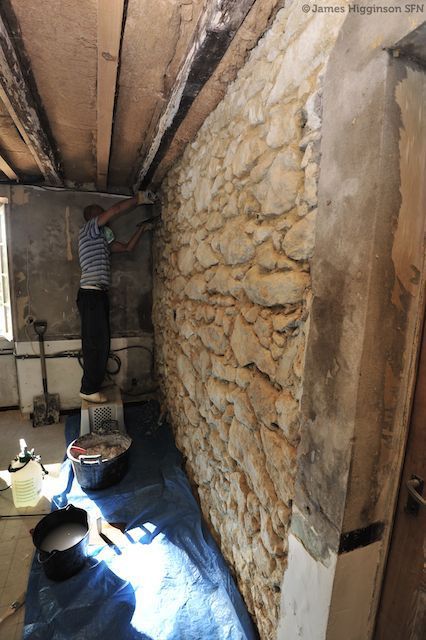
It's a slow and tedious process, but it's not difficult, the lime and sand mixture remains workable for a long time.
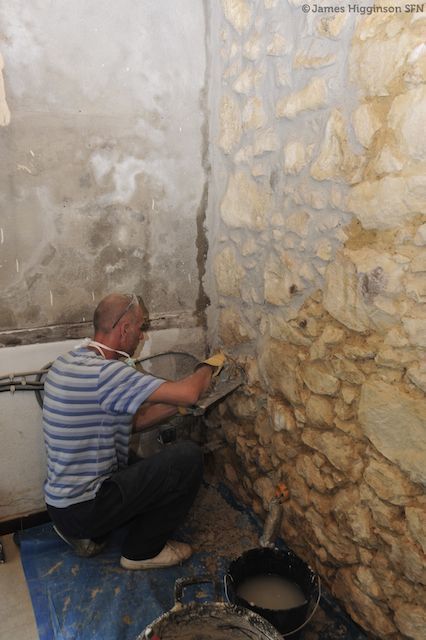
Keep the wall very moist, this will help the mortar to adhere and stop it drying out too quickly which can result in cracks.
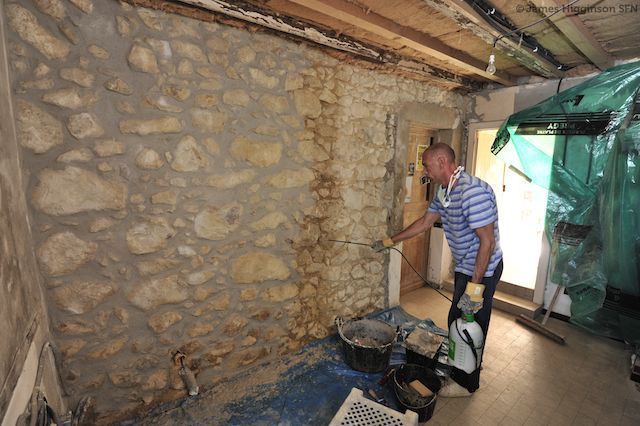
After a few hours you can use a wire brush or wet paint brush to smooth out the pointing.
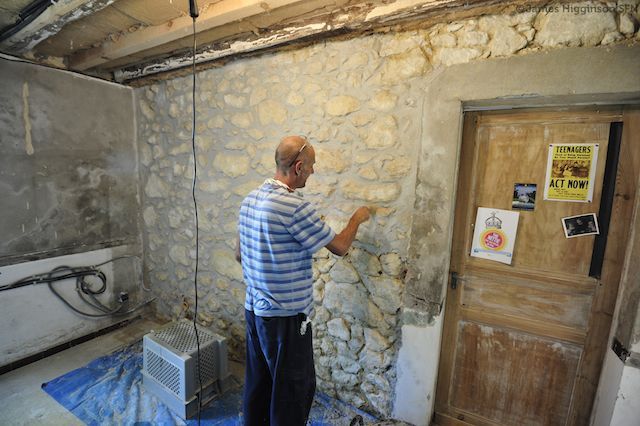
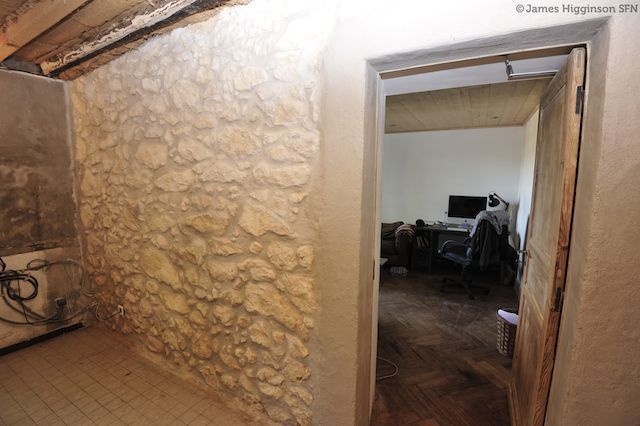
The mortar will have a green tinge to it for some days to come due to the lime content, it will eventually dry out and become the same colour as the sand you used.
I prefer only to do this to interior walls as I like to insulate the others.
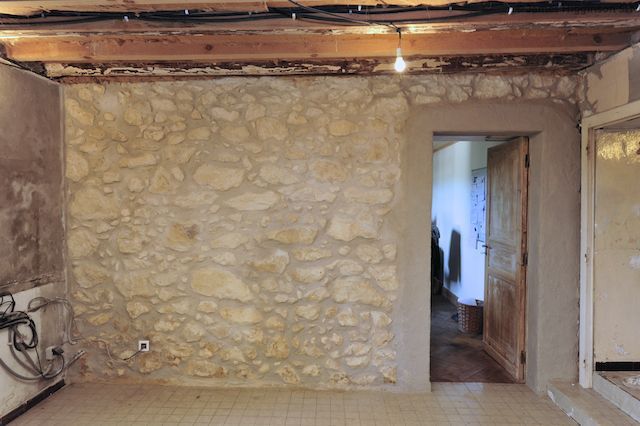
This is a nice and easy DIY project, cheap to do too. Make sure you wear gloves though, the lime is corrosive!
